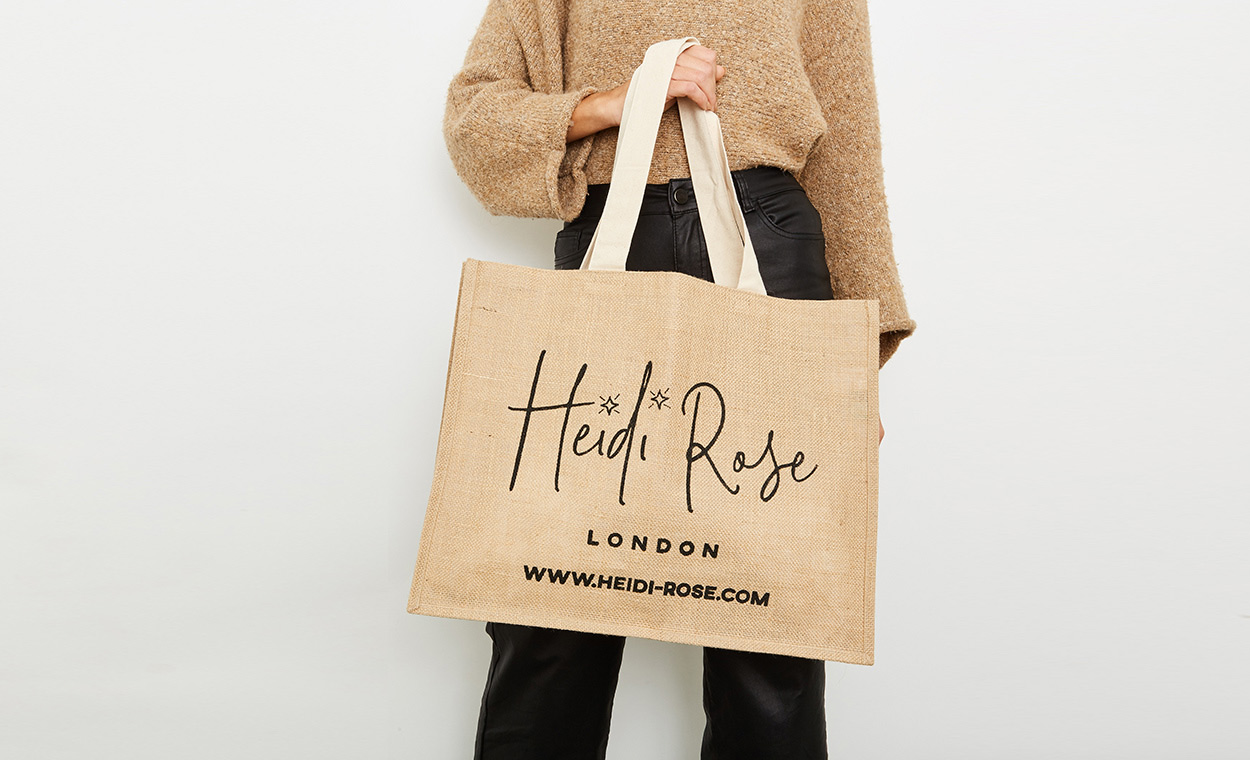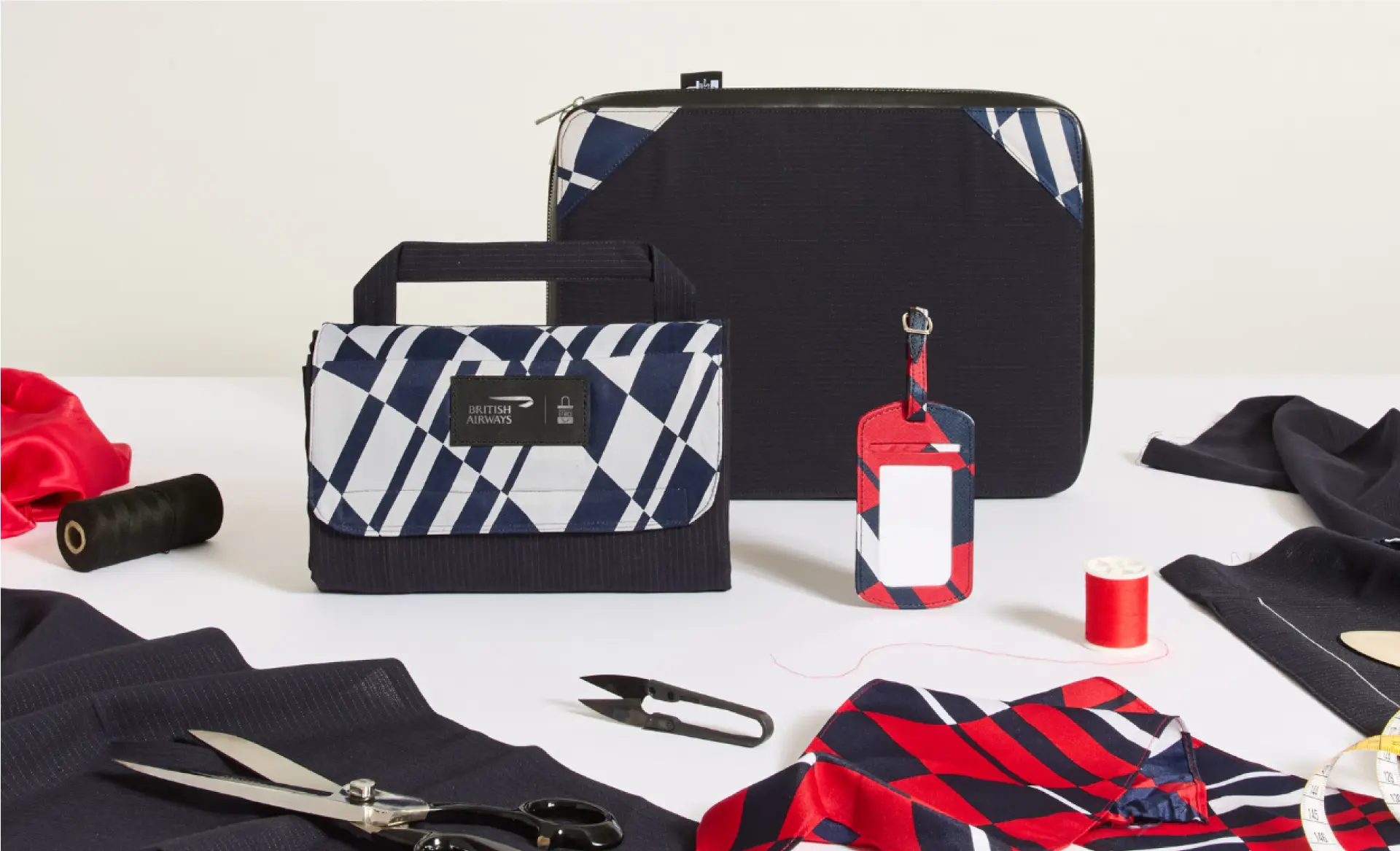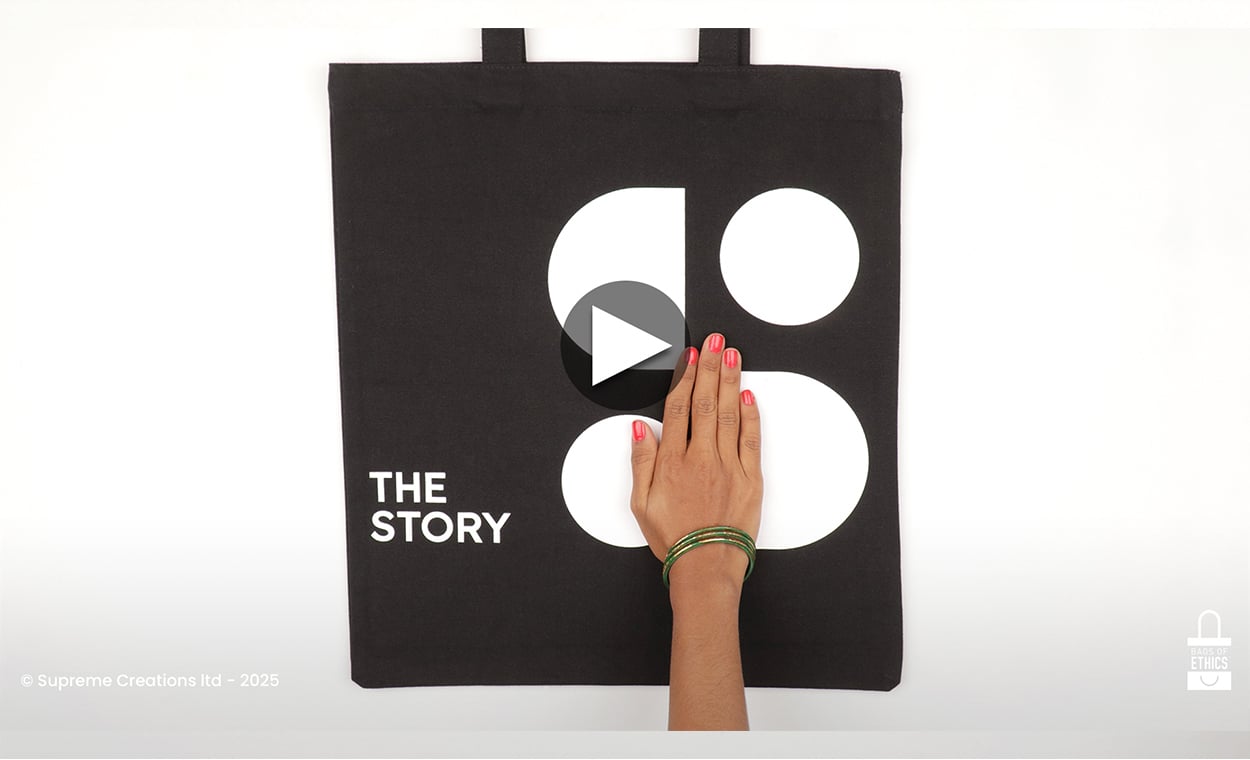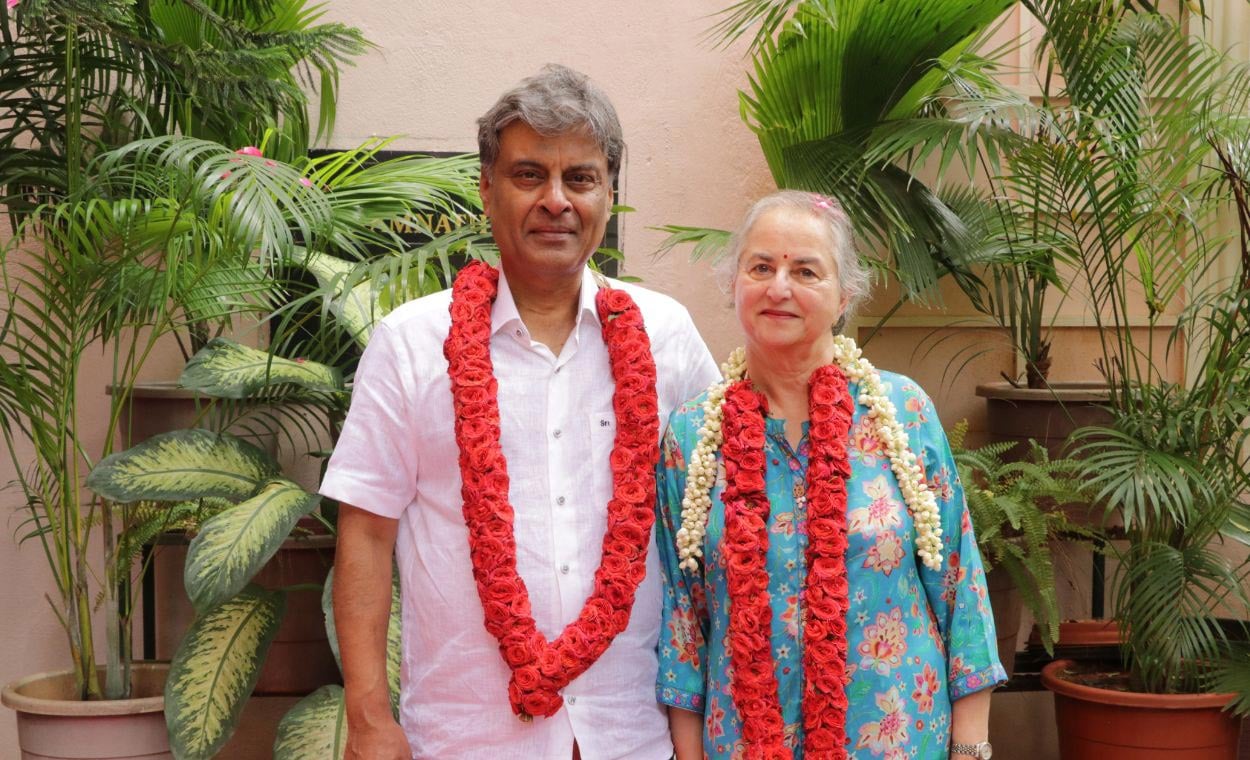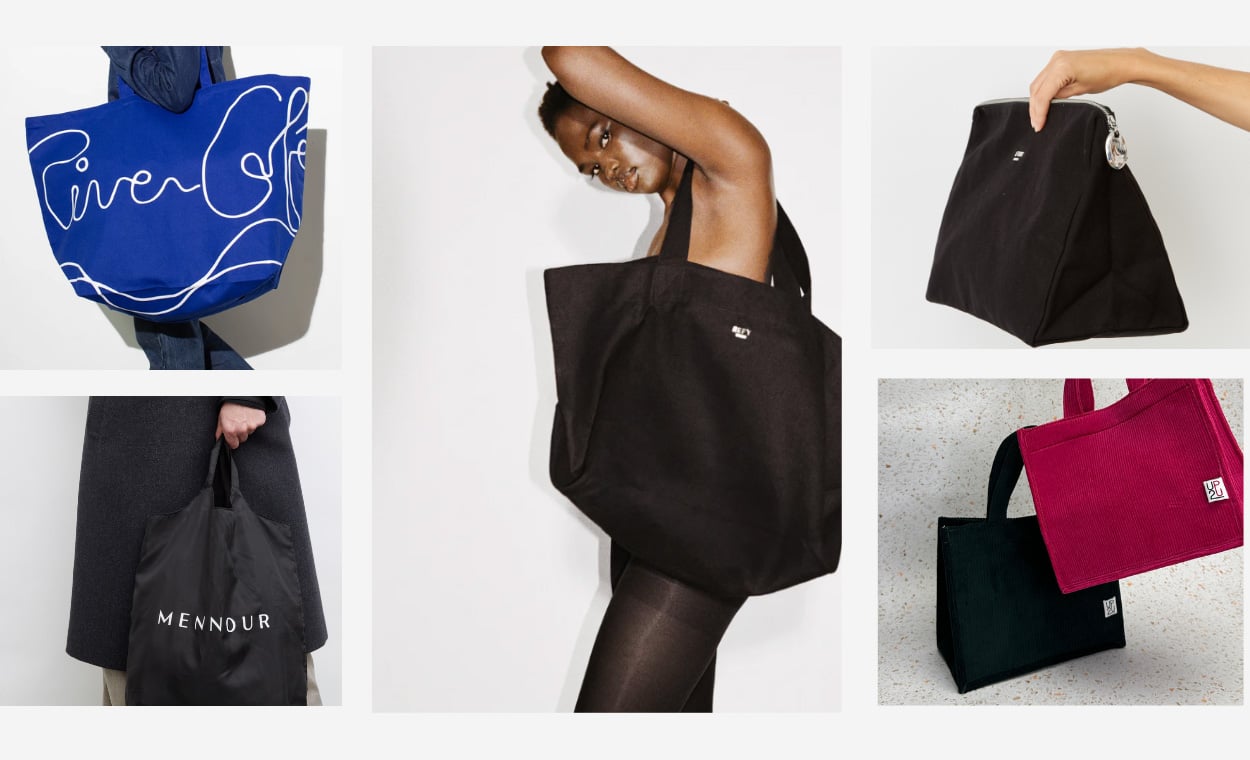Personalised jute bags are the perfect representative to show you care about sustainability and plastic free packaging. We’ve done our research and want to share how you can use jute instead of cotton to create a reusable and sustainable bag for your company.
Jute is a long, soft, shiny bast fibre that can be spun into coarse, strong threads. It is produced from flowering plants in the genus Corchorus, which is in the mallow family Malvaceae. It is native to South Asia – with great local supply near our factory in Pondicherry in India. It is a hardy fabric that was traditionally used for backing carpets, but now can be spotted in delis, farm shops, to package up flowers, and all things horticultural.
Personalised Jute shopping and drawstring bags — what can we offer?
All our personalised jute shopping and drawstring bags can be dyed to pantone and we also have our own in-house standard jute colours including black jute.
As we have our own manufacturing company, we are able to source our jute and control the quantities with maximum control.
At Supreme Creations we can offer laminated jute to add durability and to increase the time that your packaging stays looking good as new.
You can choose from our variety of products including jute bags in any colour, jute drawstring bags, screen printed jute bags, jute bottle bags.
Where does jute come from?
Jute material is a natural vegetable fiber made from the outer stem and skin of a jute plant. Jute can be a very durable material which makes up hessian cloth. It can be commonly used for jute bags and various other accessories and packaging options.
Due to jute’s durability and strong material, the fabric requires minimal maintenance and is very durable for carrying heavy loads such as groceries.
The jute plant itself can be found in regions such as South and East Asia where the plant is most prominent and where there is well drained fertile soil.
How is jute sustainable?
- Jute is 100% biodegradable and can degrade naturally in 1-2 years, meaning low-energy recycling and no threat to the environment.
- The plant is harvested every six months however, wood can take decades to produce the same volume of wood fiber. Plus, growing jute takes less land as one hectare of field can produce more jute fiber than one hectare of cotton meaning more food and crops can be grown.
- Jute is a very strong fabric that can last for long with no alterations. It is made from natural fibres which mean can keep their strength and shape for a longer period of time.
What is the difference between hessian and jute?
Jute is more refined version of hessian, it offers a high quality product and a softer finish. On the other hand, burlap is used as an alternative term for hessian as they are used for rustic and coarse fabric.
Click here to see our jute product gallery
Eco-friendly fabrics you should be using for your branded bags
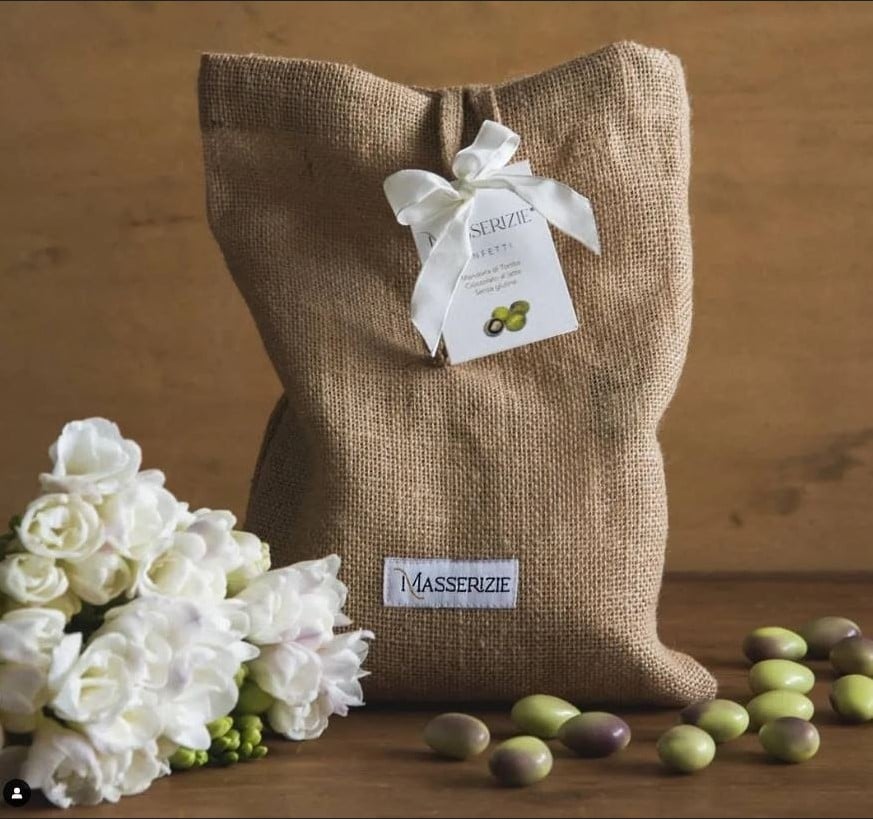
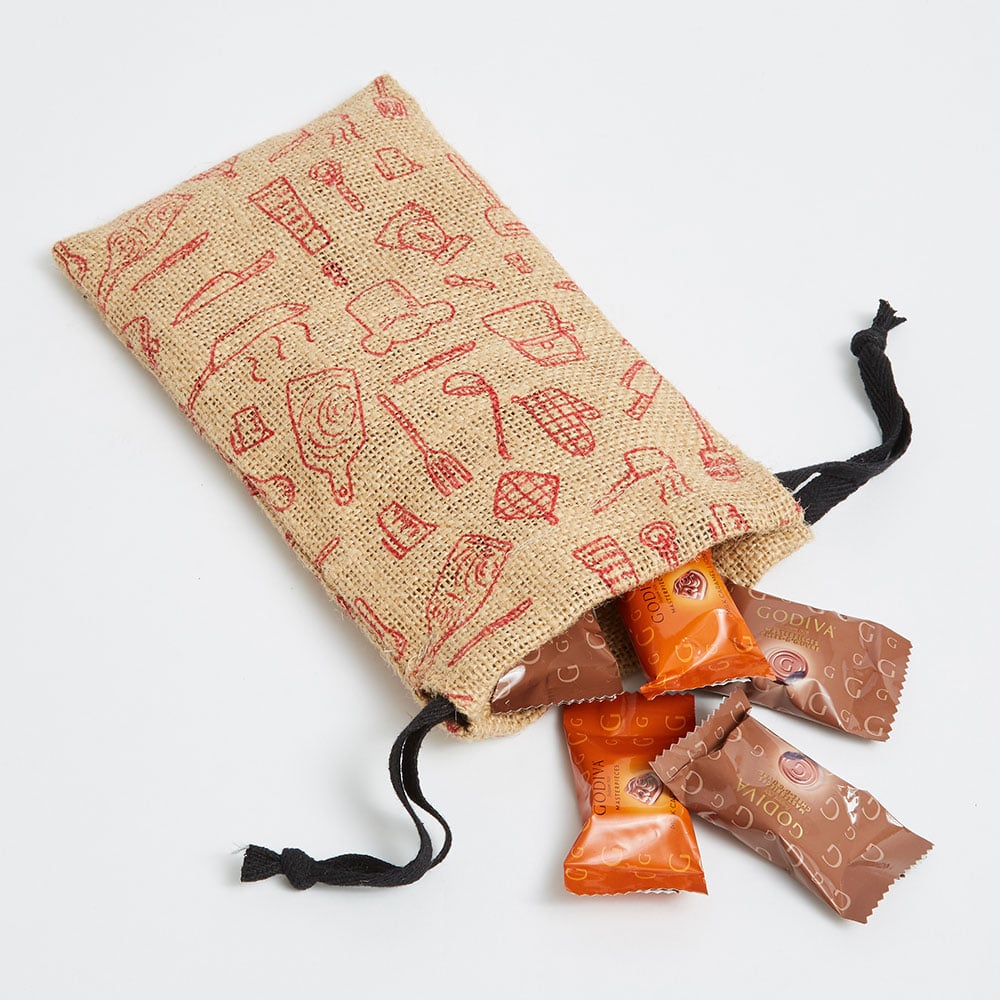








 France
France
 Germany
Germany
 Italy
Italy
 Spain
Spain
 United States
United States
 India
India
